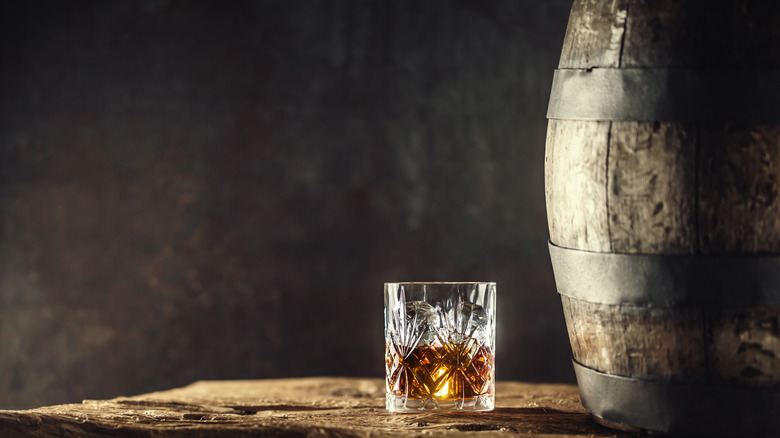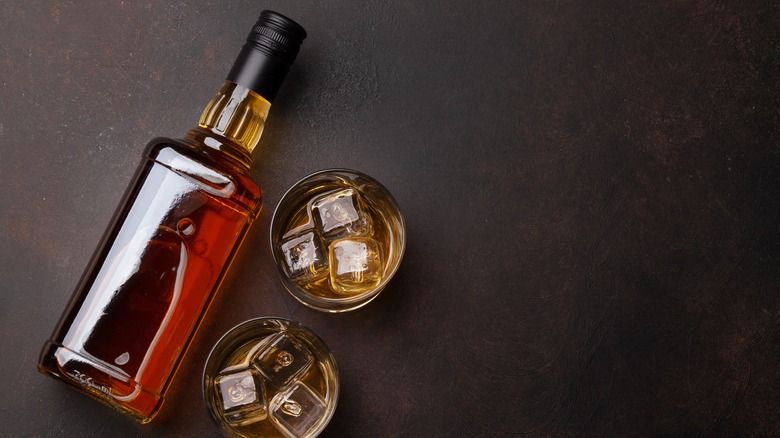What Is Cask Strength Bourbon?
Even if you're not a serious whiskey collector, tracking down bottles like Pappy Van Winkle that are so rare that officials for the Oregon Liquor and Cannabis Commission were fired for using their inside information to acquire the prized bourbon — you've probably noticed that bourbon is a big deal. Part of the rarified market for bourbon with bottles that sell for thousands of dollars is the proliferation of different varieties and bottlings, even from a single producer, resulting in fine distinctions among bourbons that can mystify the uninitiated.
Terms like "mash bill," "high rye," and "cask strength" are critical for understanding what to look for when you're scanning the shelves in search of a bottle you'll enjoy. Mash bill, for example, refers to the percentages of kinds of grain used to make whiskey. For bourbon, the mash bill must be at least 51% corn. High rye generally means that the mash bill contains more than roughly 10% rye, resulting in a blend that's likely to be a bit spicier than other bourbons.
Cask strength refers to the alcohol content of a spirit, and while you'll certainly find it on bourbon bottles, it's not unique to bourbon. You'll find bottles of Irish whiskey, Japanese whisky, and Scotch whisky that bear the same designation. What exactly does it mean?
Cask strength bourbon is high in alcohol and flavor
When you're talking about alcohol content in distilled spirits, the U.S. is unusual in that it frequently refers to both the alcohol content, expressed as a percentage, and also to the "proof" of the spirit, which is double the alcohol content. The rest of the world simply refers to the percentage ABV or alcohol by volume. Bourbon, by law, must be bottled at a minimum of 40% ABV or 80 proof.
But whiskey starts out higher than 40% ABV because alcohol evaporates as spirits age in oak. By law, bourbon can be distilled to no more than 160 proof (80% ABV), and it can go into the barrel at no more than 125 proof. Once aging is complete, many distillers choose to add water to attain their desired flavor profile, bringing down the ABV of the bourbon in the cask.
Cask strength bourbons, along with other whiskeys, aren't watered down after aging, nor are they chill-filtered, which makes them powerfully intense in terms of alcohol, flavor, and texture. Most cask-strength whiskeys come in at 60% to 65% ABV, with some as high as 75%. Fans of cask-strength bourbons relish the unadulterated, unfiltered, full-on bourbon experience. In addition, many bartenders prefer higher-proof spirits, as they retain flavor and alcohol, even when diluted by ice and mixers.

